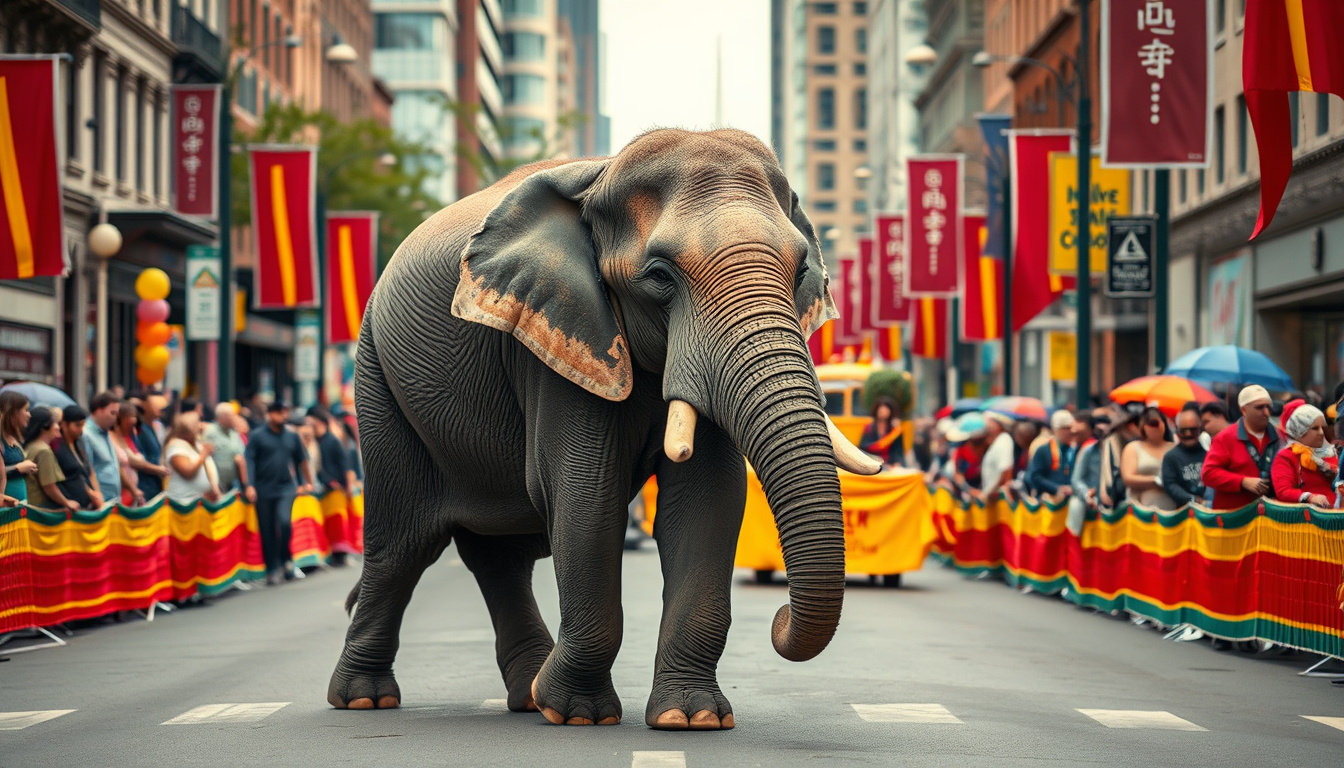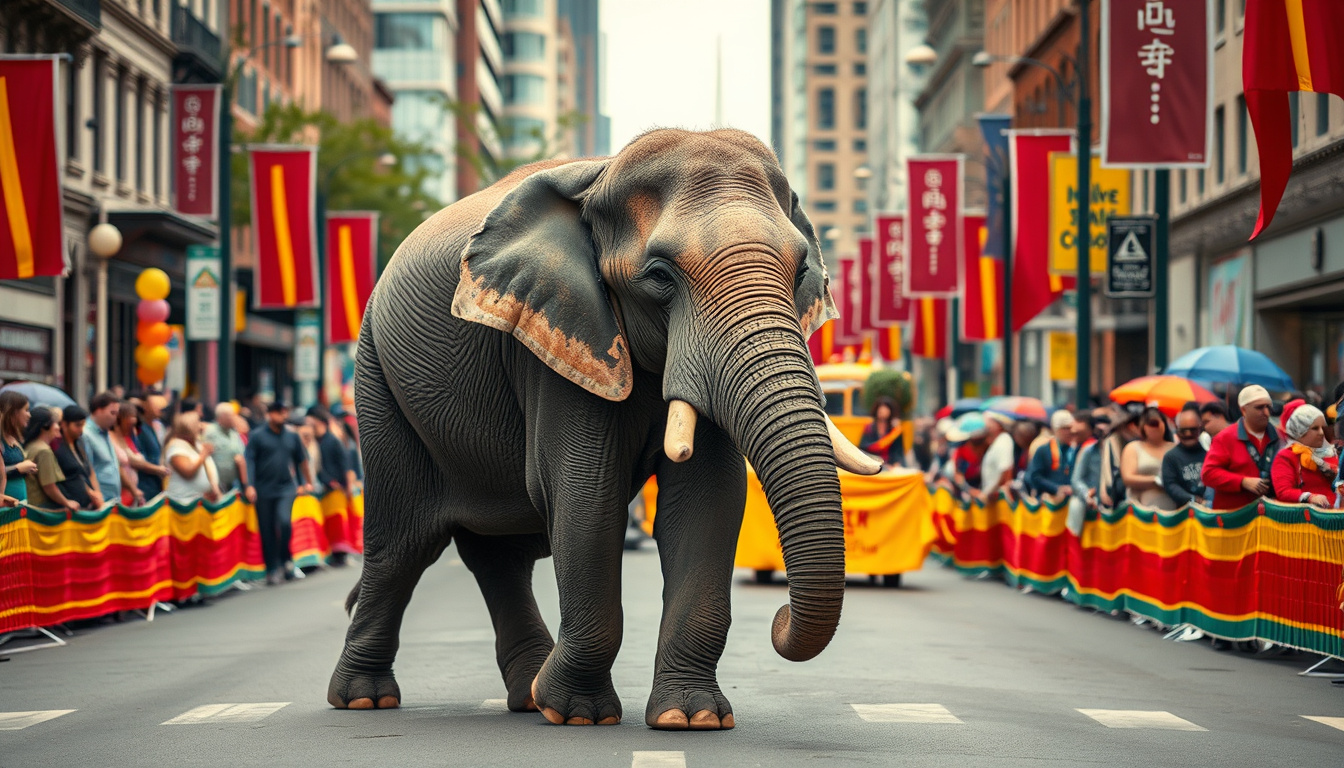In the heart of Toronto, elephants once called the streets their stage. Throughout the 20th century, these majestic creatures captivated audiences from all walks of life during parades, circuses, and public spectacles. From the mesmerizing performances of the Garden Bros Circus to the fanfare surrounding Circus Vargas, elephants became a symbol of entertainment, adorning Toronto’s bustling streets with their grandeur. However, behind the enchanting facade lay a darker reality of confinement and cruelty.
Recent developments mark a significant turning point in the treatment of these animals. In December 2023, the Canadian Senate proposed Bill S-15, a landmark piece of legislation designed to ban the use of captive elephants and great apes in performances. This shift signifies not only an evolving view of animal rights in Canada but also highlights the need for society to re-evaluate its relationship with wild animals. In this article, we delve into the history and cultural significance of elephants in Toronto, the harrowing realities they faced, and the promising future of animal rights legislation that seeks to end their exploitation once and for all.

Key Takeaways
- Elephants were once central to Toronto’s entertainment scene, captivating audiences in parades and circuses.
- The treatment of elephants in captivity revealed significant abuses, leading to public outcry and a shift in perception.
- Recent legislative efforts in Canada, like Bill S-15, signify a strong movement towards animal rights and the protection of wildlife from exploitation.
The Historical Role of Elephants in Toronto Entertainment
The historical narrative surrounding elephants in Toronto is as captivating as it is complex, particularly during the vibrant 20th century when these magnificent creatures were a symbol of entertainment in the city. Major attractions like the Garden Bros Circus and Circus Vargas enthralled citizens with spectacular performances that prominently featured elephants, drawing large crowds eager to witness their awe-inspiring presence. Archive photographs provide a glimpse into this past, showcasing elephants majestically parading down Toronto’s bustling streets and appearing at prestigious venues such as Roy Thomson Hall, cementing their role in the city’s cultural heritage. However, behind the spectacle lies a dark reality; these gentle giants often endured severe mistreatment, confined in cramped cages and subjected to harsh training practices that often caused them distress. A particularly heartbreaking episode in 1972 highlights the tragic consequences of such exploitation when an elephant, agitated and frightened, trampled a trainer, resulting in its euthanasia. This harrowing incident has sparked conversations around animal welfare, leading to a notable shift in societal attitudes toward the use of wild animals in entertainment. Fast forward to December 2023, the Canadian Senate made headlines by introducing Bill S-15, aimed at banning the use of captive elephants and great apes in performances, a significant legislative move that underscores the growing commitment to protect animals from cruelty and advocates for the ethical treatment of all living beings. This evolution in public opinion not only signifies a turning point in Canada’s approach to animal rights but also promises a future where the dignity and wellbeing of elephants and similar animals are prioritized over entertainment.
The Legislative Shift Towards Animal Rights and Protection
The introduction of Bill S-15 marks a pivotal moment in the ongoing movement for animal rights in Canada. This proposed legislation seeks to end the longstanding practice of using captive elephants and great apes in performances, reflecting a broader societal shift towards empathy and responsibility for the treatment of animals. The momentum behind this bill doesn’t just stem from tragic incidents of the past but from a more profound recognition of the intrinsic value of wildlife. Advocates argue that the unique emotional and social needs of elephants cannot be met in a circus environment, where they are often forced into unnatural situations for human amusement. Furthermore, public awareness campaigns and educational programs have played a crucial role in shaping perceptions, emphasizing the psychological and physical harm these animals endure. As the discussion continues within legislative arenas, it is clear that the introduction of such measures demonstrates a commitment to evolving animal welfare standards, ensuring a more humane approach to our relationship with wildlife.





